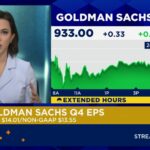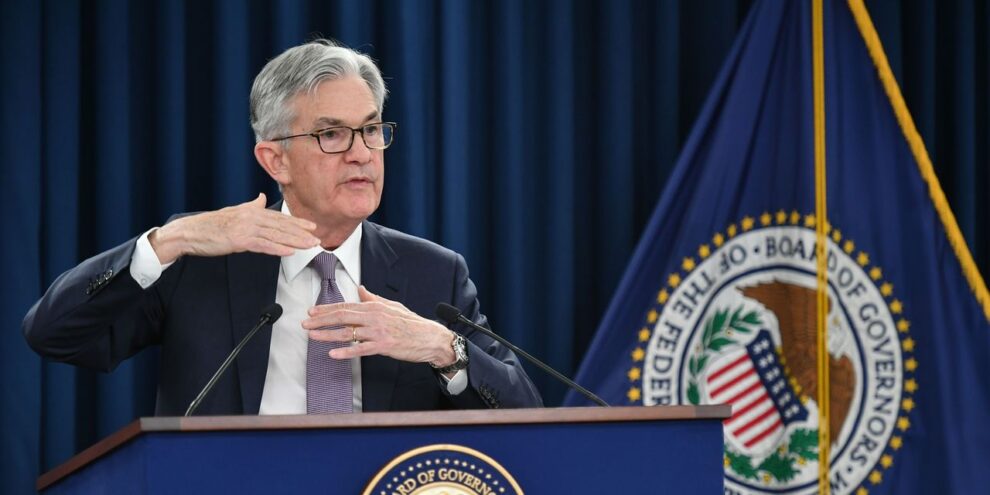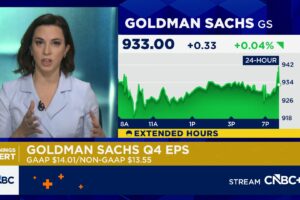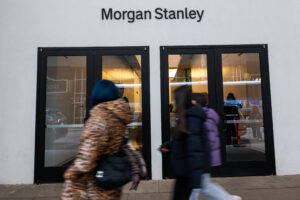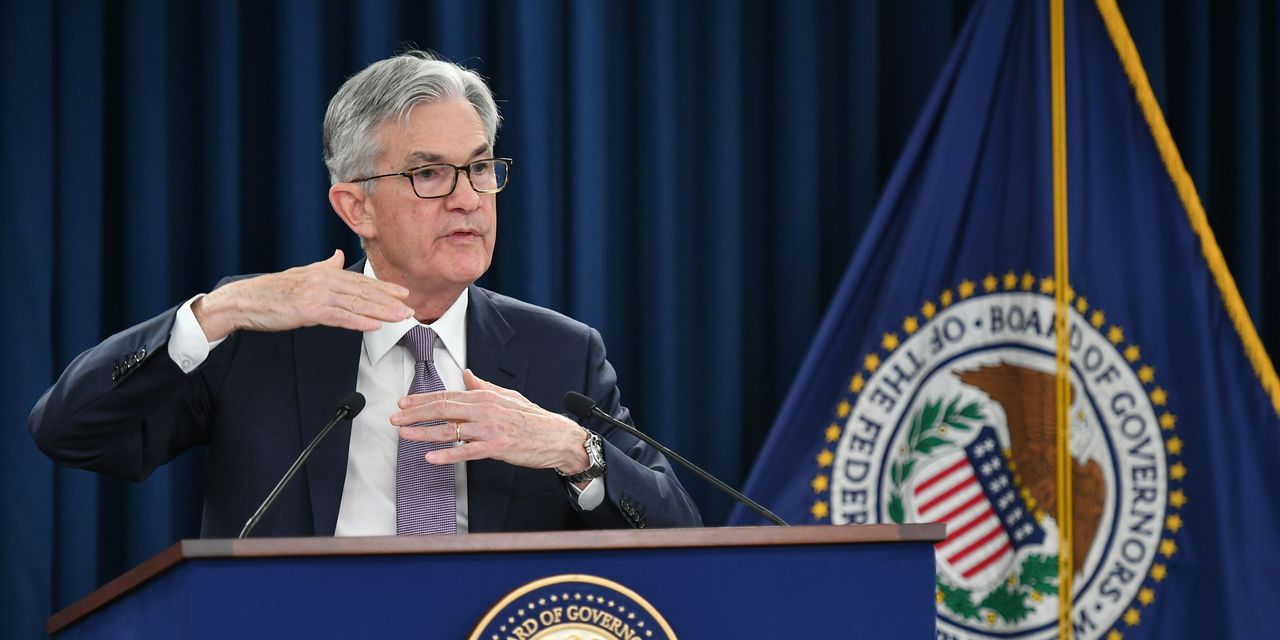
U.S. stocks were higher Wednesday for a second day of gains in bumpy trade, after the Federal Reserve pulled the trigger on its first interest rate hike since 2018, while indicating more rate increases and balance sheet reduction will follow.
Investors also watched Ukraine-Russia developments and a quick retreat in oil prices from recent highs.
What’s happening
- The Dow Jones Industrial Average DJIA, +1.06% rose 216 points, or 0.7%, to 33,756.
- The S&P 500 SPX, +1.68% gained 50 points, or 1.1%, to trade around 4,311.
- The Nasdaq Composite Index COMP, +2.99% rose 303 points, or 2.4%, to 13,253.
Stocks in the previous sessions saw the Dow rise 599 points, or 1.8%, while the S&P 500 jumped 2.1% and the Nasdaq Composite surged 2.9%.
What’s driving markets
The spotlight was squarely on aggressive tones from the Federal Reserve, which delivered a quarter-percentage point interest-rate increase, as widely anticipated.
The Fed’s policy statement also indicated the potential for seven total rate hikes this year, and that balance sheet reduction will begin at a coming meeting, as it looks to tighten financial conditions to tame inflation.
See: Fed raises rates and plots strategy of steady further increases
Chairman Jerome Powell said the economy was very strong, with healthy growth expected, despite higher oil prices and the uncertain nature of any potential financial spillover from Russia’s invasion of Ukraine, in an afternoon news briefing.
Powell also said it will take longer than previously expected to bring inflation down to the Fed’s target 2% annual rate, with “short-term” upward pressure expected to keep the costs of living high this year than previously anticipated, but he also indicated no looming recession risks.
“With unemployment at target and GDP faring well, inflation worries are at the center of the bullseye,” said Jason Brady, president & CEO at Thornburg Investment Management, in emailed comments.
Brady also said the Fed’s guidance on how its plans to shrink its balance sheet “fell short,” adding that the central bank “is going to be forced to choose between a hard landing and entrenched inflation.”
Investors expected the Fed to forecast “growth is going down, inflation is moving up interest-rate increases are likely to be more aggressive,” said Anthony Saglimbene, global market strategist at Ameriprise Financial, in a phone interview.
Even with that backdrop, Saglimbene said investors have been “nibbling” at higher-quality stocks that have been battered in recent weeks, particularly with oil prices declining sharply this week.
A sharp drop by oil futures also was credited with lifting risk appetite on Tuesday, with U.S. benchmark West Texas Intermediate crude CL.1, -1.02% and global benchmark Brent crude BRN00, +0.32% both plunging back below $100 a barrel after a surge last week to 14-year highs. U.S. oil futures CLJ22, -1.02% settled 1.5% lower Wednesday at $95.04 a barrel Wednesday.
President Joe Biden took to Twitter on Wednesday to criticize high gas prices despite this week’s tumble in oil prices, warning that oil companies shouldn’t “pad their profits at the expense of hardworking Americans.”
Biden also delivered a brief address on developments in Ukraine, announcing $800 million in additional military aid to Kyiv, after Ukrainian President Volodymyr Zelensky pressed U.S. Congress for a no-fly zone, more military aid and called for additional sanctions on Russia, even as diplomatic talks between Russia and Ukraine to end the war continued.
In economic reports, sales at U.S. retailers slowed sharply in February, rising 0.3%, and Americans probably bought fewer goods like groceries, consumer electronics and furniture after factoring in high inflation. Economists polled by The Wall Street Journal had forecast a 0.4% advance.
The previously reported 3.8% increase in sales in January, however, was raised to 4.9%, the government said Wednesday.
Read: What happens to money when the Fed starts shrinking its balance sheet?
Which companies are in focus?
- Shares of coffee-maker Starbucks SBUX, +4.48% rose 4.4% after it announced the return of company founder Howard Schultz as CEO on an interim basis, as Kevin Johnson, who has lead Starbucks for five years, plans to step down on April 4.
- Shares of battered Chinese stocks were rebounding after brutal losses in recent days, with U.S.-listed shares of Alibaba Group Holding BABA, +34.07%, JD.com JD, +37.84% and Pinduoduo Inc. PDD, +55.07% were up double-digits.
- Shares of NortonLifeLock NLOK, -14.02% fell 14.9% after the company’s proposed acquisition of Avast raised competition concerns.
How are other assets faring?
- The yield on the 10-year Treasury note TMUBMUSD10Y rose 3 basis points to 2.19%, after the Fed decision. Yields and debt prices move opposite each other.
- The ICE U.S. Dollar Index DXY, a measure of the currency against a basket of six major rivals, was down 0.3%.
- Gold for April delivery GCJ22 GC00 closed 1.1% lower at $1,909.20 an ounce.
- Bitcoin BTCUSD edged up 0.6% at about $40,000.
- The Stoxx Europe 600 SXXP, +3.06% jumped 3.2%, while London’s FTSE 100 UKX, +1.62% gained 1.7%.
—Steve Goldstein contributed reporting to this article.

